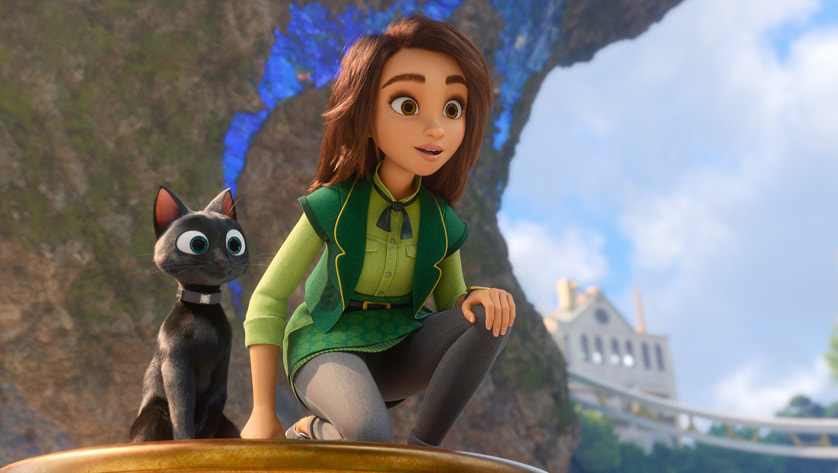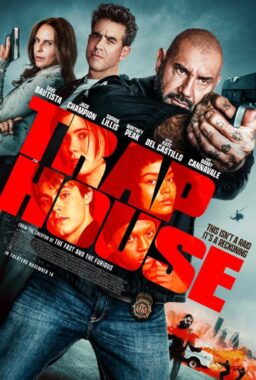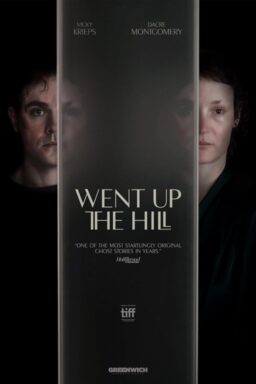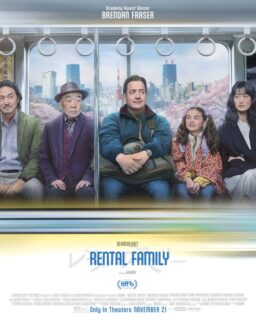Some people might consider it unlucky to have to make an animated feature film during a pandemic. But the theme of “Luck,” available in theaters and on Apple TV+ on Friday, is that sometimes what feels like bad luck can take you places you never imagined, giving you opportunities that you can only describe as lucky. In an interview, director Peggy Holmes discussed her unusual background for directing an animated feature, what she found luckiest about making the movie over Zoom, how she adapted to unexpected complications, and putting one of Madonna’s iconic hits on the soundtrack.
Can you tell me about a time when you felt lucky?
Oh, gosh! There are two things about the movie that I feel lucky about. A) that we were able to continue working through COVID. We made this whole film over Zoom, and B) regarding the movie, the cast. We feel so lucky to have this amazing cast on this movie.
You have an unusual background for animation. What does your career as a dancer and choreographer bring to this project? How does it influence the way you see directing?
I am not an artist at all. I’m not trained in visual arts. I cannot draw. I can’t do any of those things these amazing artists do in animation. But what I can do is bring to the table this idea of rhythm. I just look at everything as a dance number, so I really am able to bring a certain rhythm to sequences that maybe someone else wouldn’t approach that way. I love dance, I love movement, I love bodies moving in space. For lots of films I worked on as a choreographer I would choreograph a sequence that didn’t look choreographed. We would design every single move to help tell the story of whatever was going on in that song sequence. And that is the kind of nuanced work I love. When I realized that I could take that kind of work and put it into the world of animation I was like, “This makes perfect sense to me.”
When you’re a choreographer you are moving human bodies in a world of consistent gravity. In this film you are doing movement for many non-human bodies and sometimes where gravity is not consistent. We know how a cat moves and the cat moves very realistically in this movie. But you’ve also got a dragon and a unicorn and bunnies that do things that bunnies don’t do. What do you do to make that believable within the context of this fantasy world?
One thing we do is we talk about shapes. So, we work with the story artist before we’re even animating. And what was a great tool for us is looking at all the different sizes in the movie and the cast. You have Jane Fonda, this character, a dragon, 40 feet tall, and she has to have a conversation with Sam who’s only five-foot-four and a human. All of a sudden you know you have to get this dragon from way up here to way down there. So, it’s a matter of really just playing with those body shapes and introducing the idea that you don’t have to just come straight down, you can lead with the head and then bring her neck around, something that would look more dynamic getting down to Sam’s level. It’s the fun of really just playing with those kinds of shapes to figure out what’s going to tell the best story.

What makes a great voice actor? Someone who can do it all without relying on movement or facial expression?
It’s really a matter of bringing them into the process early enough that they’re understanding what their character is doing physically. We would show them the storyboard sequences. I think that’s super, super important. And really, it’s a matter of just relaying to them the importance of energy. They have to take all of that body movement and that physicality and make it has come out of their voice. It’s very difficult. It’s really just a matter of being at their side and supporting them so that they can just get up that energy to give you that performance. And they can’t move while they’re doing it. They need to stay on mic so it’s very, very challenging. But they did an amazing job. And I have to say, our actors were totally game to do many takes to where we all felt like that was it. That was the take that we needed.
And that was all on Zoom?
All on zoom.
Did that make any part of it easier or did it just make everything harder?
It was hard. But we were super, super lucky to be working.
I guess the easy part, which also made it hard is you could do many more meetings because you literally could just sit and click to your next meeting. As humans, I’m super proud of everyone, I’m super proud of the actors and the teams. We adapted. We figured out a way to have the creative overlap and the creative sharing of ideas even over Zoom. You had to get into a certain rhythm. You had to learn to not talk over each other. My story artists, Ray Shenusay and Lawrence Gong, would draw pictures while Kiel Murray and I are describing the moment we’re going after for the script and they’d hold it up to Zoom. “You mean something like this?” And we’d be like, “Yes, that!” And then our production team would take a picture of the Zoom screen and then send it out to the story team.
And then, recording Simon Pegg; Simon recorded from his home in the UK, and Simon and I had to get into a certain rhythm because there’s a delay over Zoom. I would feed him the line and then beat, beat, beat and then he would respond and then I’d have to wait—beat, beat, beat. We got into a rhythm and it worked. Everybody was very patient with each other.

The movie begins with a dance number which is going to be delightful for many parents in the audience. What made you choose the Madonna song for the movie?
I was a dancer in film and television in the ’80s. When I got the idea to put a song sequence in the film, Madonna’s “Lucky Star” was the very first song that came into my head. And then I could do my ’80s dance moves that I know that I think also look very cool today. I think it’s super fun to bring some of those moves back. So, I actually made my kids learn that routine, and I filmed my kids for the animators. So, it’s a really awesome, super fun, family affair.
The film makes some very subtle points about how we see the luck, good and bad, that happens to us.
There’s that moment when you think it was the worst bad luck ever to happen to you. You can look back and say, “You know what? It actually led to this really great thing that happened to me.” So, it actually was a little bit of good luck that happened. And sometimes you can’t see that in the moment. But as you look back in life, you go, “Ah, if that thing hadn’t happened I wouldn’t have taken this other path.” And I think that that’s really inspiring and hopeful and could hopefully help you through those bad moments. We don’t want to minimize bad luck. There’s some real bad luck in the world. But I just think sometimes it can also lead to the best thing that you never expected would happen in your life.
“Luck” will be available in theaters and available on Apple TV+ on August 5th.












